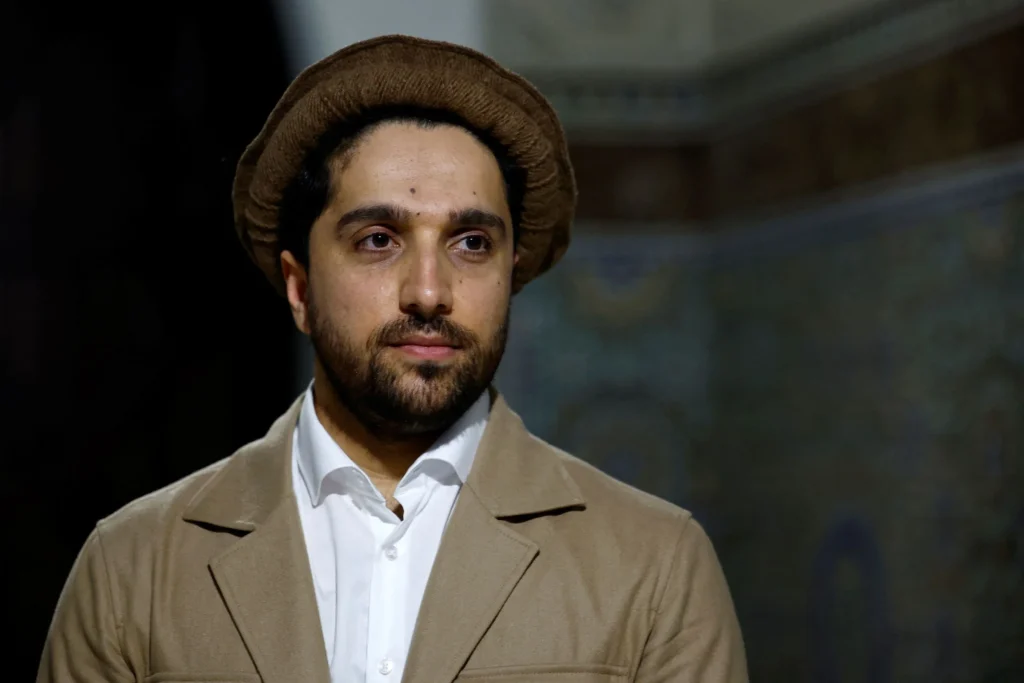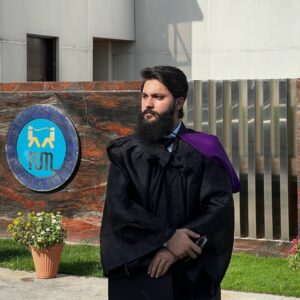Ahmad Massoud stands at the intersection of legacy and reinvention in Afghan politics. As the son of Ahmad Shah Massoud, the “Lion of Panjshir”, he inherits the symbolism of resistance, but his own project is more than lineage. Educated at Sandhurst and King’s College London, Massoud’s leadership of the National Resistance Front (NRF) blends military pragmatism with a political narrative grounded in pluralism, constitutionalism, and the protection of Afghanistan’s diverse communities. His core message challenges any monochrome portrayal of Afghanistan: statehood must be inclusive, rights-respecting, and anchored in institutions rather than force.
From legacy to platform
Ahmad Massoud’s appeal is partly mythic; the memory of Panjshir’s defiance against both Soviet occupation and the Taliban’s first regime remains potent, but he has tried to translate that aura into a modern platform. The NRF frames resistance as both defensive (protecting communities from coercion) and constructive (keeping open the possibility of political dialogue, elections, and national reconciliation under credible guarantees). That duality is crucial: it posits that armed struggle is not an end state, but rather a means to a negotiated political order where Afghans, not external patrons or militias, set the national terms.
Governance vision and constraints
Ahmad Massoud’s vision foregrounds plural citizenship and decentralized governance, with protections for minorities and women, and a civil service animated by merit rather than patronage. Yet constraints are real: resource scarcity, fragmented opposition, limited safe havens, and geopolitical fatigue make sustained resistance difficult. Recognizing these limits, Ahmad Massoud has cultivated diaspora networks, diplomatic channels, and media platforms to keep Afghanistan’s pluralist alternative visible. He argues that international engagement should prioritize civic space, education, and livelihoods, preconditions for any durable political transition.
Afghan figures beyond the Taliban
Many protagonists beyond the Taliban shape Afghanistan’s future, and highlighting these figures resists fatalism: women leaders and rights advocates such as Fawzia Koofi and Shaharzad Akbar, alongside countless grassroots organizers in Herat and Kabul.
They continue to champion education, political participation, and dignity despite severe repression; technocrats and reformers, from former central bank officials to health administrators, engineers, and educators working both inside the country and in exile, quietly preserve institutional capacity, document needs, and sustain humanitarian operations essential for any future rebuilding; cultural and intellectual voices, including writers, filmmakers, journalists, and diaspora artists, keep narrative pluralism alive and use storytelling as civic resistance; and ethnic and regional community leaders across Tajik, Hazara, Uzbek, Pashtun and other communities mediate conflicts, maintain services, and anchor social cohesion, providing the grassroots legitimacy that any renewed national compact will depend upon.
Ahmad Massoud’s prominence gives coherence to this constellation, but it does not subsume it. The point is breadth: Afghanistan has many centers of gravity that can support a more representative future.
Strategic pathways for a pluralist future
To convert moral appeal into political traction, several practical pathways are essential: bolstering institutional stamina by supporting educational continuity, municipal services, and community health to preserve civic capacity under duress; safeguarding information integrity through independent documentation of rights violations and inclusive dialogue platforms that increase accountability and counter propaganda; building economic resilience with livelihoods programmes, cross‑border trade facilitation, and diaspora investment to reduce incentives for armed recruitment and sustain communities; and pursuing layered diplomacy that engages regional actors and multilateral forums with a rights‑centred agenda, separating humanitarian access from political recognition while creating secure channels for intra‑Afghan dialogue under credible guarantees.
Ahmad Massoud and his peers can align around these practical pillars, even when tactical differences exist. The aim is not uniformity but coordination on shared civic objectives.
Risks and realities
There are hard truths: resistance movements can fragment; external patrons may prioritize short-term security over inclusive politics; repression can shrink civic space further. Moreover, a purely militarized opposition risks mirroring the coercive logics it opposes. Ahmad Massoud’s challenge, if he is to transcend legacy, is to keep the resistance tethered to civilian priorities, uphold international humanitarian norms, and cultivate a politics that welcomes dissent rather than domesticate it.
Why Ahmad Massoud matters now
Massoud matters less as a romantic figure and more as a bridge: between the memory of struggle and the necessity of institutions; between armed leverage and political settlement; between Afghan plurality and a state architecture that protects it. His leadership is most valuable when it amplifies the voices of other Afghans, including women, technocrats, artists, and community elders, into a chorus that can negotiate the contours of a dignified Afghan future.
Conclusion
Afghanistan is not a single story. Ahmad Massoud’s NRF, women’s rights leaders, cultural figures, and professional reformers represent an alternative axis of legitimacy: one that centres dignity, inclusion, and rule-bound governance. Elevating these personalities is not public relations; it is strategy. It signals to Afghans and the world that a different future remains possible, provided civic capacities are preserved, dialogue is protected, and pluralist leadership is given tangible support. In that coalition, Massoud is a keystone, but the architecture is collectively built.



